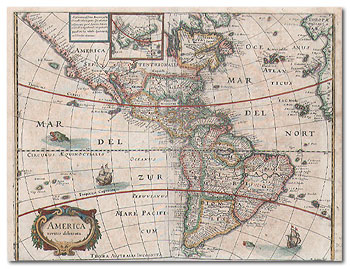

Click on the images for a larger view. |
Paz Soldán, Mariano Felipe. Atlas geográfico del Perú. Paris, 1865.
After
experience as a lawyer and a judge, Paz Soldán was sent as minister to Colombia and then
journeyed to the United States, where he studied the penitentiary system. He established
an improved system in Peru and was made director of public works. Subsequently, he became
minister of foreign relations and of justice. He died in 1886.
This
Atlas was published by the order of President Castilla of Peru. It contains many detailed
maps of geographic features, plans of cities, and splendid lithographs of city views and
native peoples.
|
|
![]()

